|
ID |
Nickname |
Country / City |
Languages |
Taxonomies |
Comment |
Project / Group |
Map |
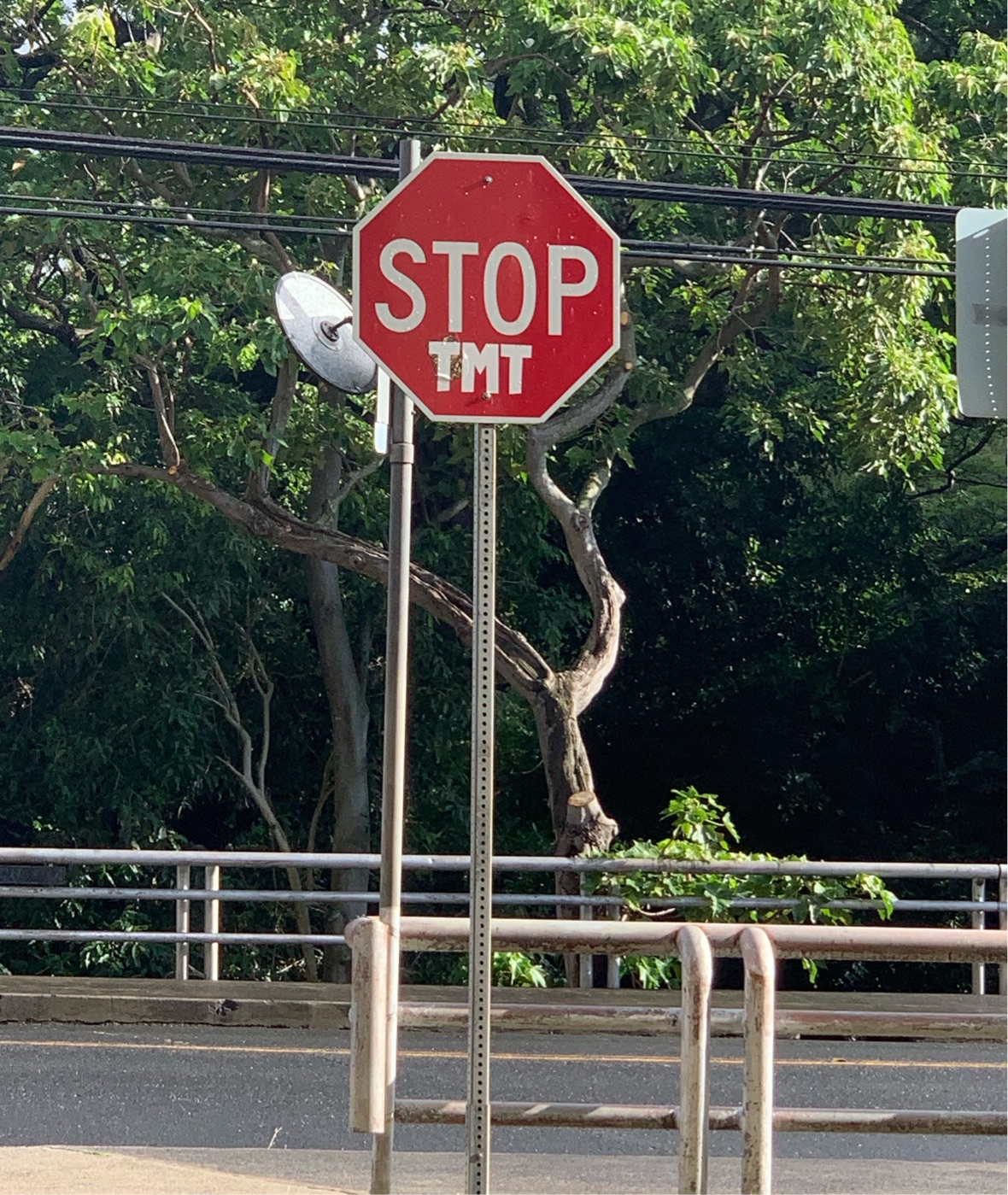
|
46033
|
|
ʻAmelika Hui Pū ʻIa
Honolulu
|
|
|
HK - This is a stop sign on Dole Street, on the side road that enters the dorms. “STOP TMT” is referring to Mauna Kea and the 30-meter telescope. This is a clear protest to stopping the construction of the telescope on Maunakea which has been a long-time protest for the Hawaiians since 2019. This is probably made by a supporter of Maunakea. This is a huge concern within the Hawaiian Community because Maunakea is a sacred place and should not be disgraced by people who just walk on it. It is an ideal place to build the telescope but already Maunakea has been desecrated by other telescopes, and Hawaiians will not stand for this any longer.
|
Multilingual Hawaiʻi
|
|
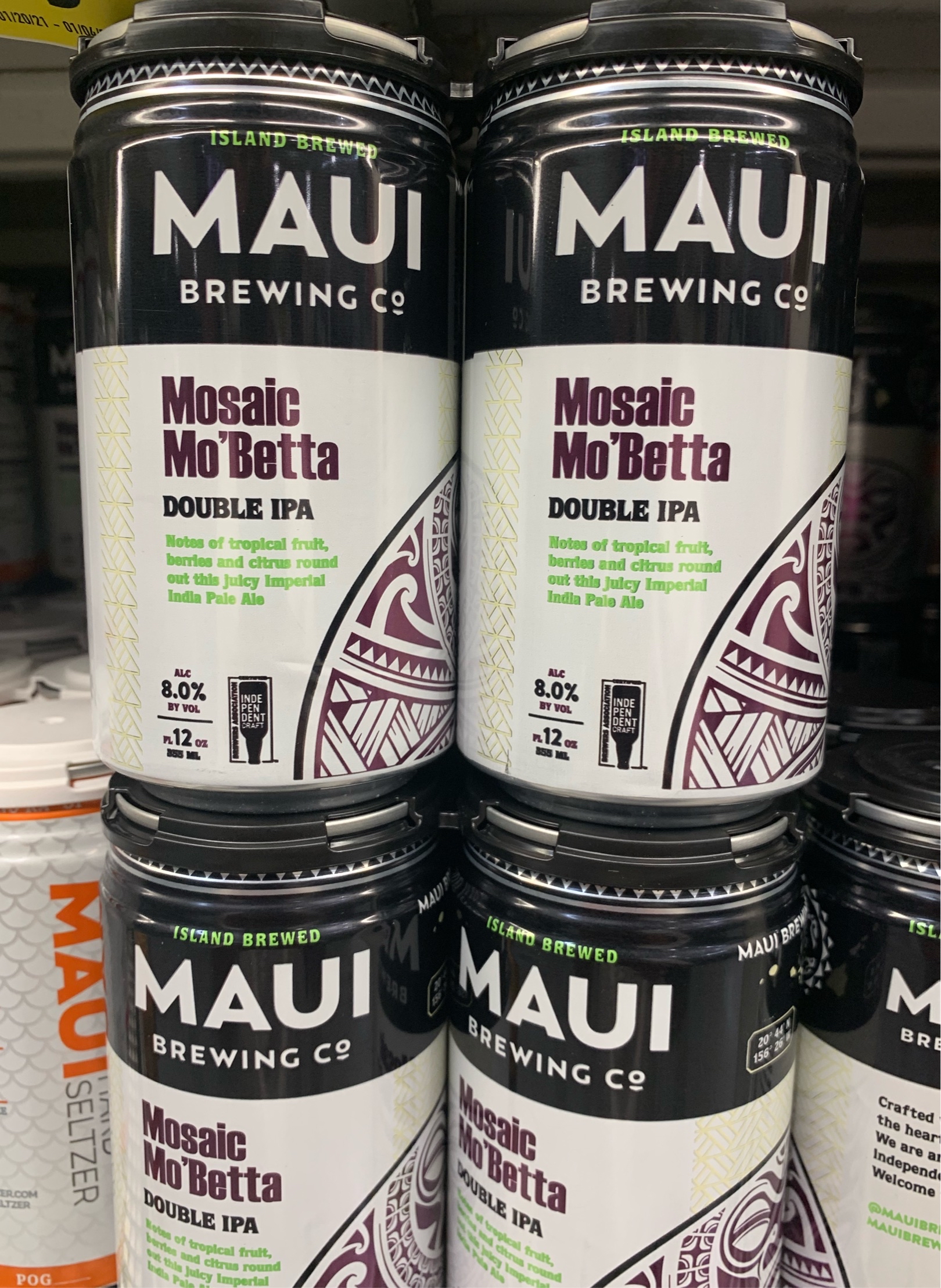
|
46034
|
|
ʻAmelika Hui Pū ʻIa
Honolulu
|
|
|
HK - Maui Brewing Co is a company that has multiple breweries around Hawaiʻi with Maui being the birthplace of it. I don't personally drink but I do see these cans around supermarkets all over Hawaiʻi. I found this case in Foodland where the flavor of the can catch my eye. “Mosaic MoʻBetta”. This is a clear use of pidgin as naming and branding being used. Mosaic the tropical and citrus taste of it, Moʻbetta is emphasizing that this beer is more better when itʻs Maui Brewing Coʻs. I find it awesome that local is doing well where it can sell multiple cases to big stores or shops. Especially the target audience is locals. Do you think that this is also doing justice to the use of Pidgin in stores?
|
Multilingual Hawaiʻi
|
|
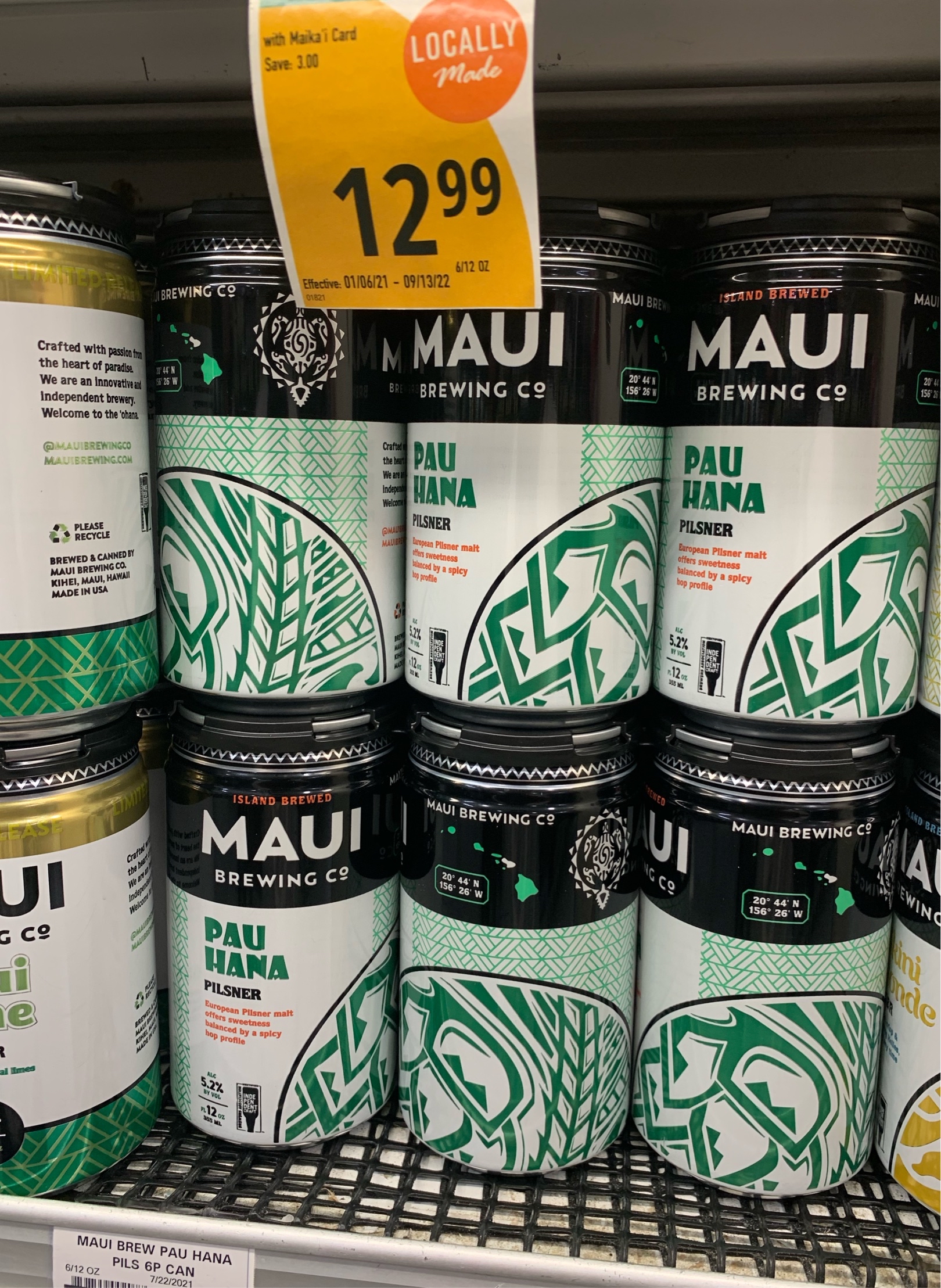
|
46035
|
|
ʻAmelika Hui Pū ʻIa
Honolulu
|
|
|
HK - This is another example of pidgin being used by the same local company. I found this at Foodland as well. Pau Hana is saying finished or done work. A simple saying but a huge relief for some people and why not take a cold one to celebrate the occasion of being finished from a long day of work that only locals could understand.
|
Multilingual Hawaiʻi
|
|
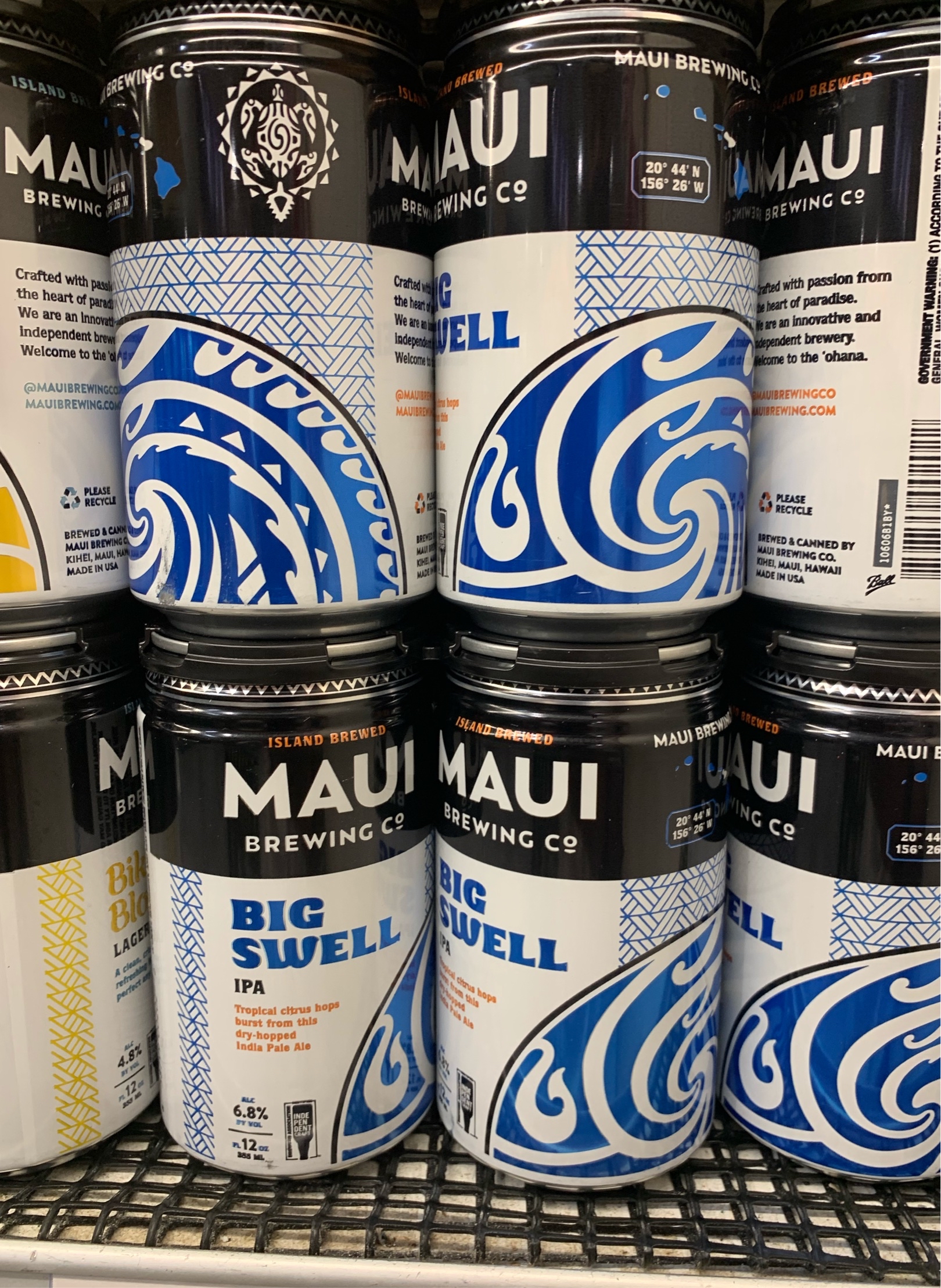
|
46036
|
|
ʻAmelika Hui Pū ʻIa
Honolulu
|
|
|
HK - This is another example of pidgin being used by the same local company. I found this at Foodland as well. Big Swell would normally refer to the waves of the ocean being picked up and it's producing some good waves to surf on. Big swell in the metaphorical way of drinking could mean, a big drunk or a swell of good beer is coming when you drink this. This may just refer to some surfers or targeted people who like to chill and relax, but locals nonetheless.
|
Multilingual Hawaiʻi
|
|
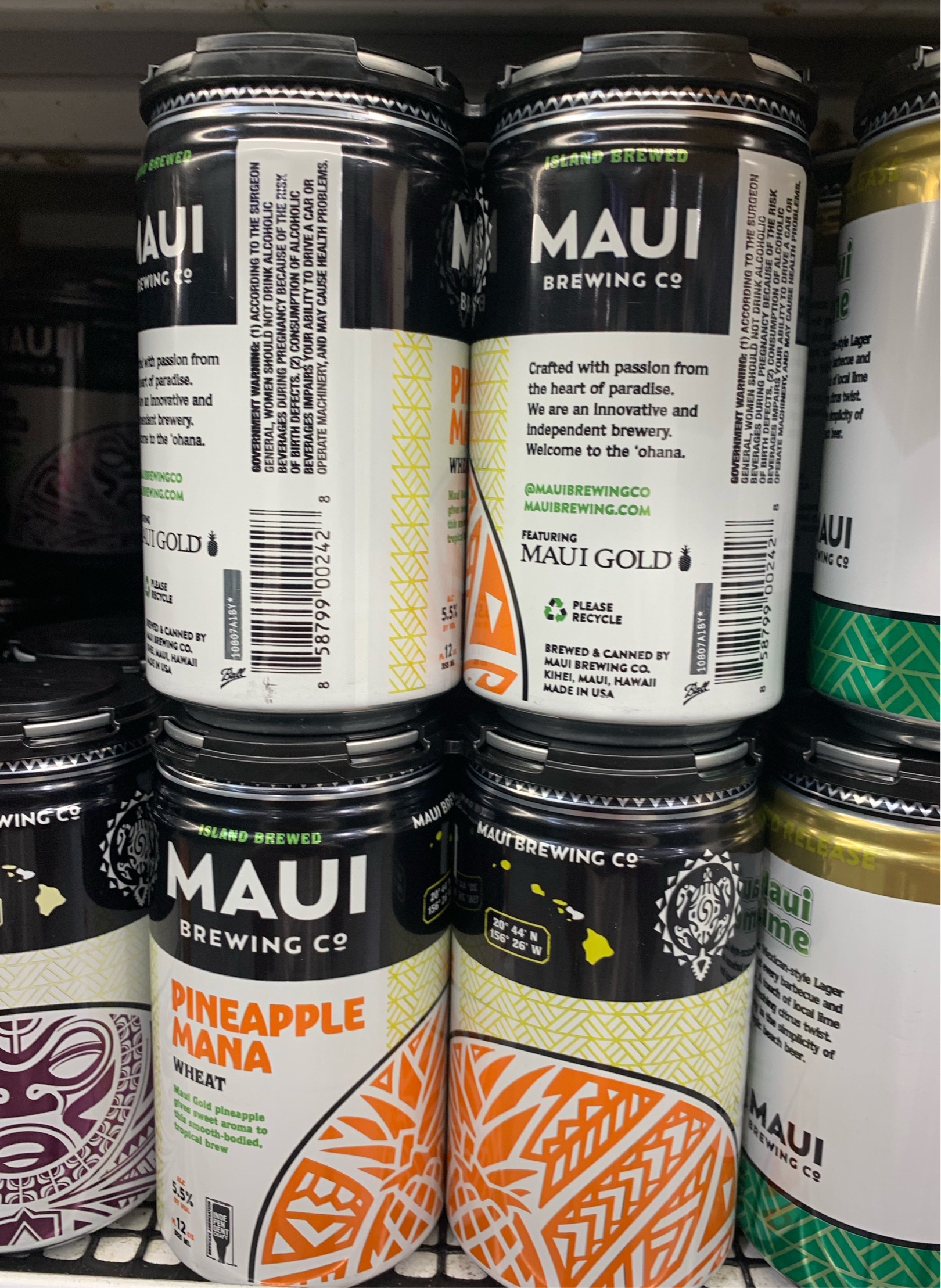
|
46037
|
|
ʻAmelika Hui Pū ʻIa
Honolulu
|
|
|
HK - Last Pidgin example of brewing examples, made by the same company, these are just some of their options here in Hawaiʻi. Pineapple Mana is the spirit or energy of Pineapple. We are saying that the purest forms of pineapple are in this flavor, captured in a can of ʻono beer. This might be a reach out to Haoleʻs who may want to try out this flavor and this company, though it may just be for locals.
|
Multilingual Hawaiʻi
|
|
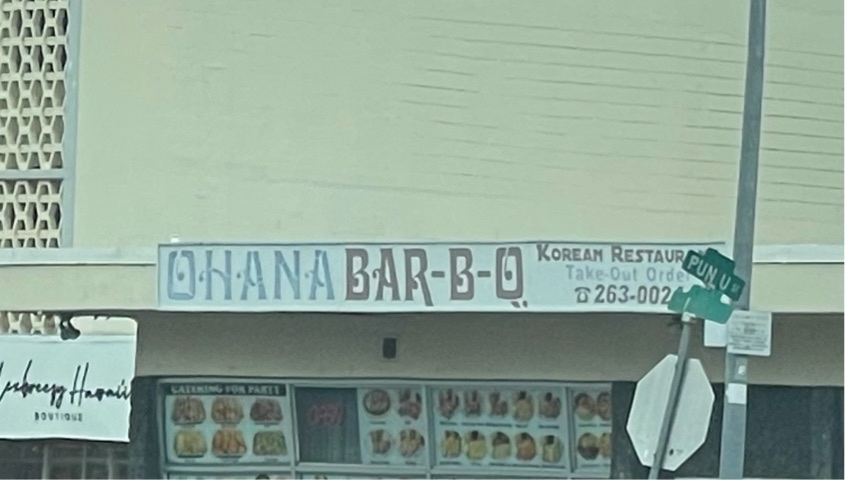
|
46039
|
|
United States
Kailua
|
|
|
SU: Check Up #2
- What languages are used on the sign?:
The languages that are used on the sign are Hawaiian & English.
- How are the languages presented?:
The Hawaiian word “Ohana” is presented in big, blue letters. The English words are presented in big and small, blue and red letters. The words “Ohana Bar-B-Q” are in big letter because that’s the name of the restaurant and the rest of the words are in a smaller font because it tells you what kind of restaurant this is and the phone number to call for a take out order.
- Who is the audience?:
The audience is the general public and could be for both locals and non-locals.
- What is the domain?:
The domain is a workplace and an eating place.
- What is the sign telling people?:
The sign is telling people that it is a Korean restaurant and since it says “Ohana Bar-B-Q”, “Ohana” means family so it might be a family owned Korean Bar-B-Q restaurant.
- Why is Hawaiian being used here?:
Hawaiian is being used here because it could easily catch the attention of the non-locals and locals alike.
|
Multilingual Hawaiʻi
|
|
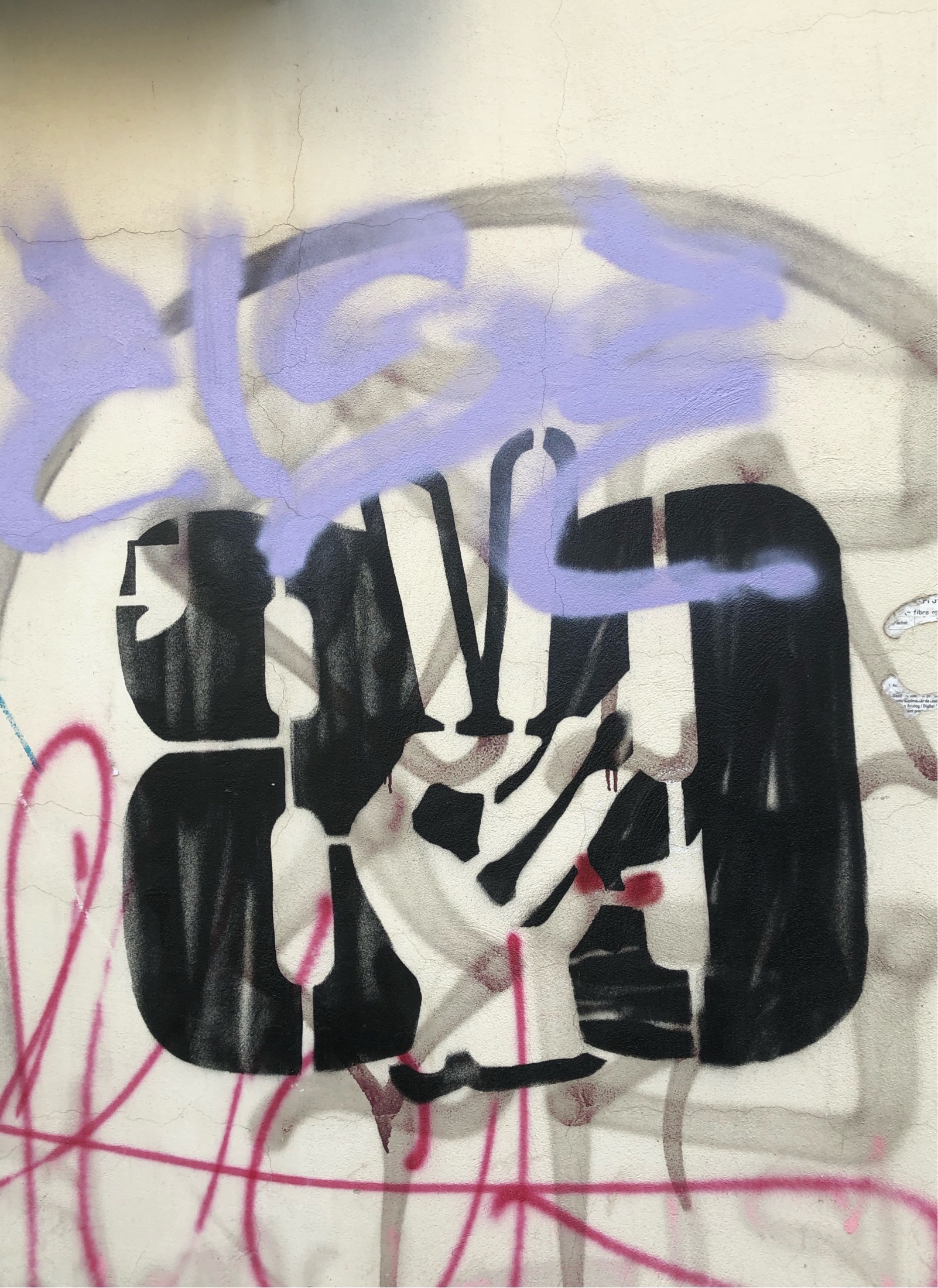
|
46042
|
|
Rumänien
București
|
|
|
Revolution, 1989
|
|
|

|
46046
|
|
United States
Kaneohe
|
|
|
SU: Check Up #2
- What language is used on the sign?:
The language that is used on the sign is Hawaiian.
- How is the language presented?:
The language is presented in big, white letters. I think it is presented in big letters in a color that stand out to show the power of the word and how important it is.
- Who is the audience?:
The audience is the general public but it is mainly for the locals.
- What is the domain?:
The domain is on the back of a car and used as a bumper sticker.
- What is the sign trying to tell people?:
The sign is trying to tell people that maybe this person is a parent. As the word “Kia’i” means a guardian or protector. One who has the kuleana or responsibilities of the protection and preservation of a person, please or thing.
- Why is Hawaiian being used here?:
Hawaiian is being used here it is appropriate for being on Hawaiian land but also because they might be Hawaiian.
|
Multilingual Hawaiʻi
|
|
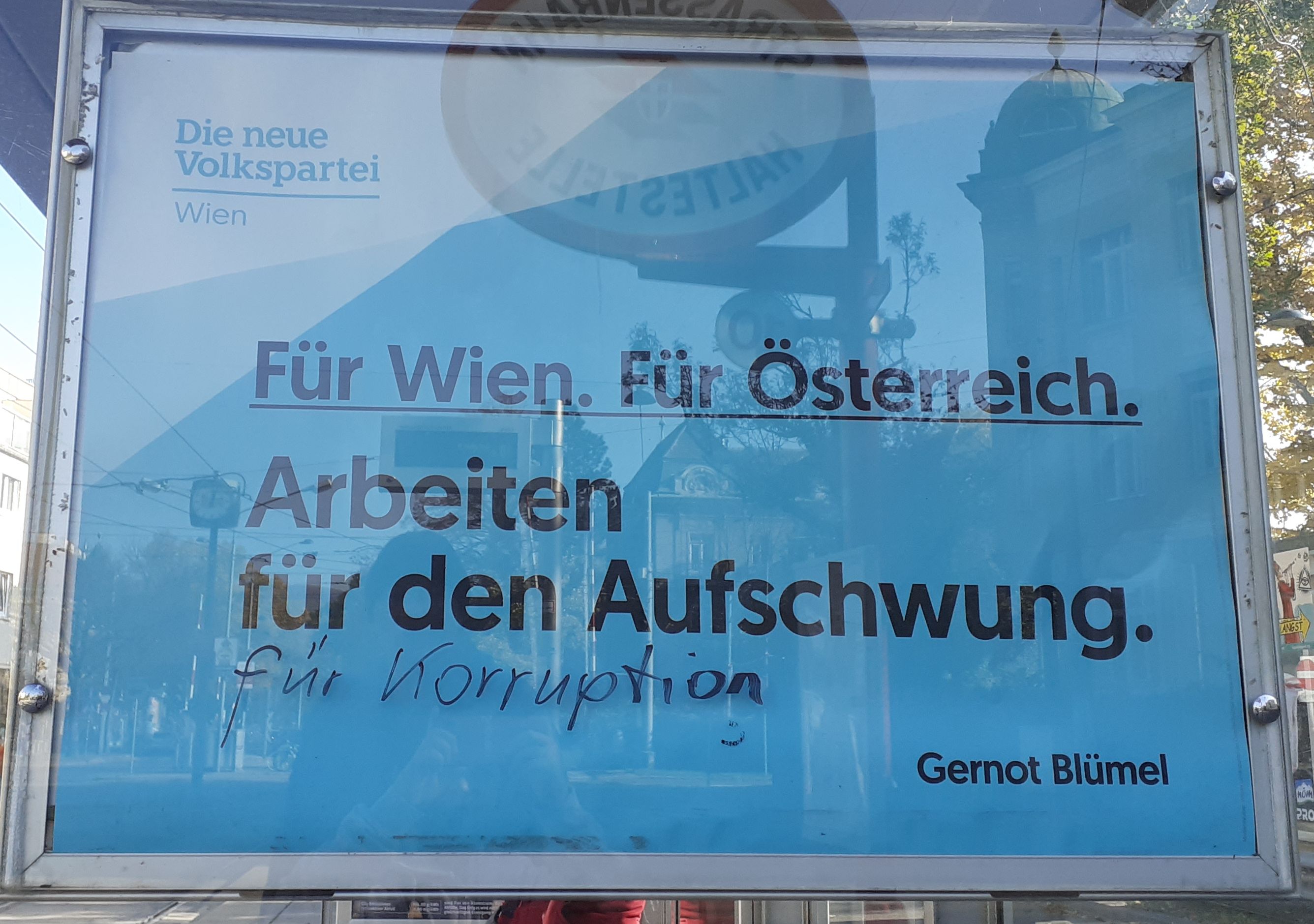
|
46047
|
|
Austria
Wien
|
|
|
;-)
|
IamDiÖ
|
|
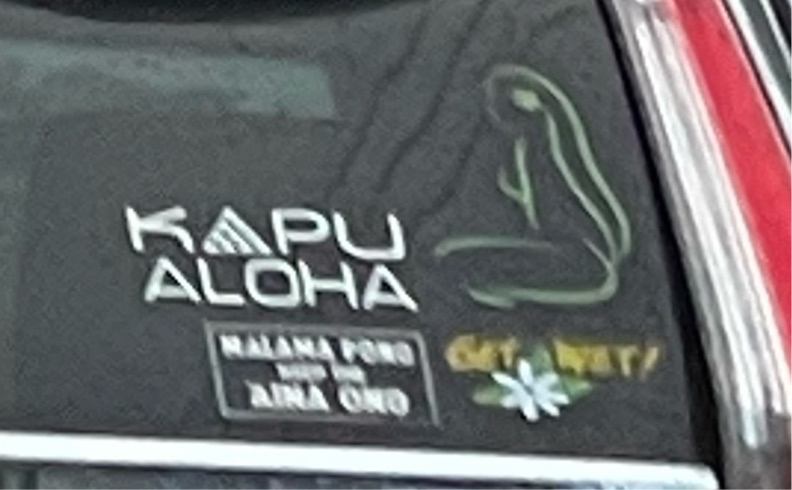
|
46050
|
|
United States
Kaneohe
|
|
|
SU: Check Up #2
- What language is used on the sign?:
The language that is used on the sign is Hawaiian.
- How are the language presented?:
The language is presented in big, thin, white letters.
- Who is the audience?:
The audience is the general public but it is mainly for locals.
- What is the domain?:
The domain is the back of a car used as a bumper sticker.
- What is sign telling people?:
The sign might be telling people to always live with aloha. Kapu Aloha honors the energy and life found in aloha - compassion - and helps us focus on its ultimate purpose and meaning.
- Why is Hawaiian being used here?:
Hawaiian is being used here to catch the attention of the locals. To send out the message, especially to them, that it is important to live with aloha anywhere and everywhere.
|
Multilingual Hawaiʻi
|
|
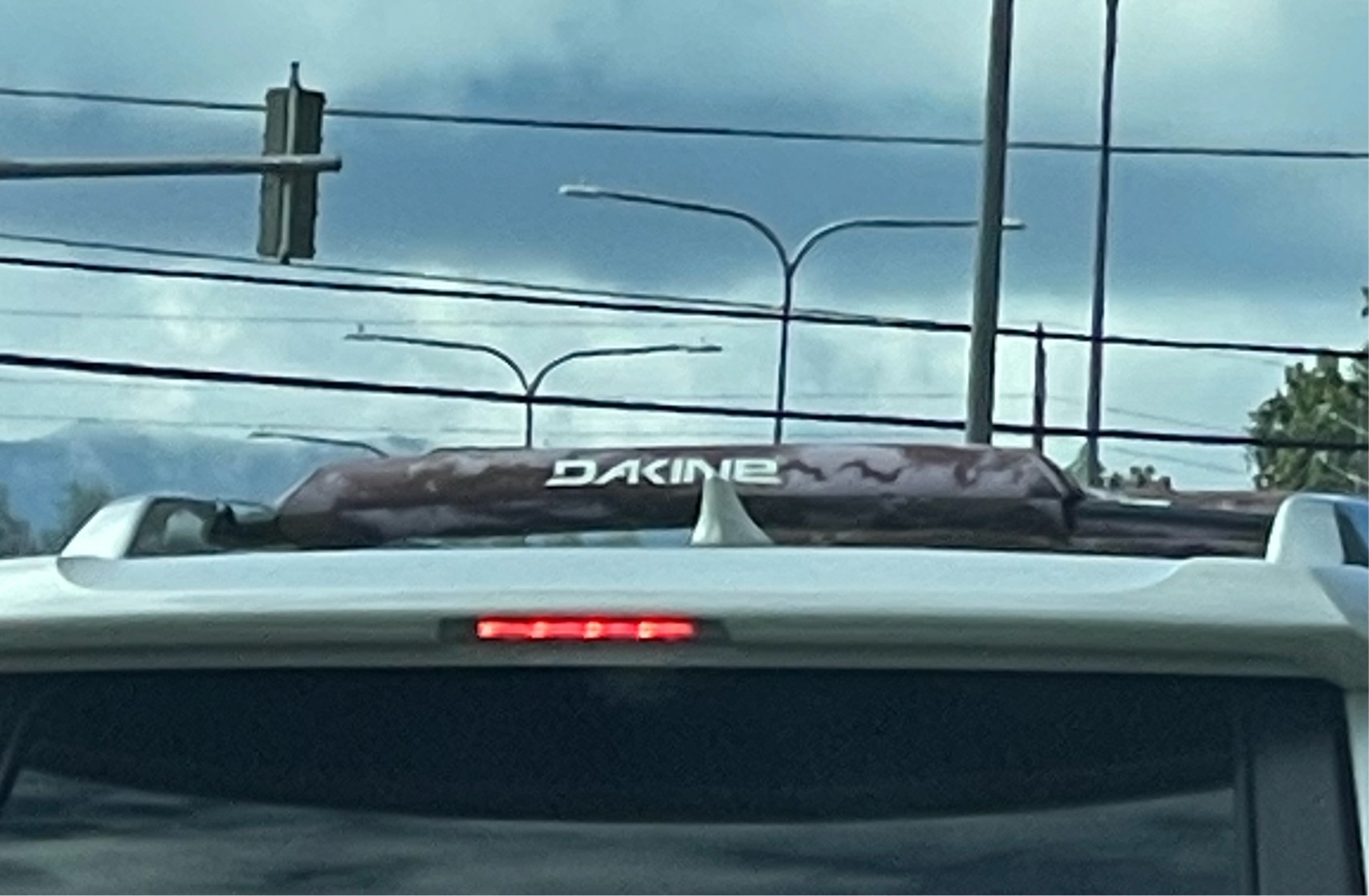
|
46052
|
|
United States
Kaneohe
|
|
|
SU: Check Up #2
- What language is used on the sign?:
The language that is used on the sign is Hawai’i Creole or Pidgin.
- How is the language presented?:
The language is presented in all capital, white letters.
- Who is the audience?:
The audience is the general public but it is more commonly known by locals.
- What is the domain?:
The domain is on the top of a car in public.
- What is the sign telling people?:
The sign is the name of a clothing brand that is commonly known in Hawai’i.
- Why is Pidgin being used here?:
Pidgin is being used here because it is appropriate since we live on an island that consists of people who speak Pidgin and it could also be that they’re showing that they’re proud to be a local.
|
Multilingual Hawaiʻi
|
|
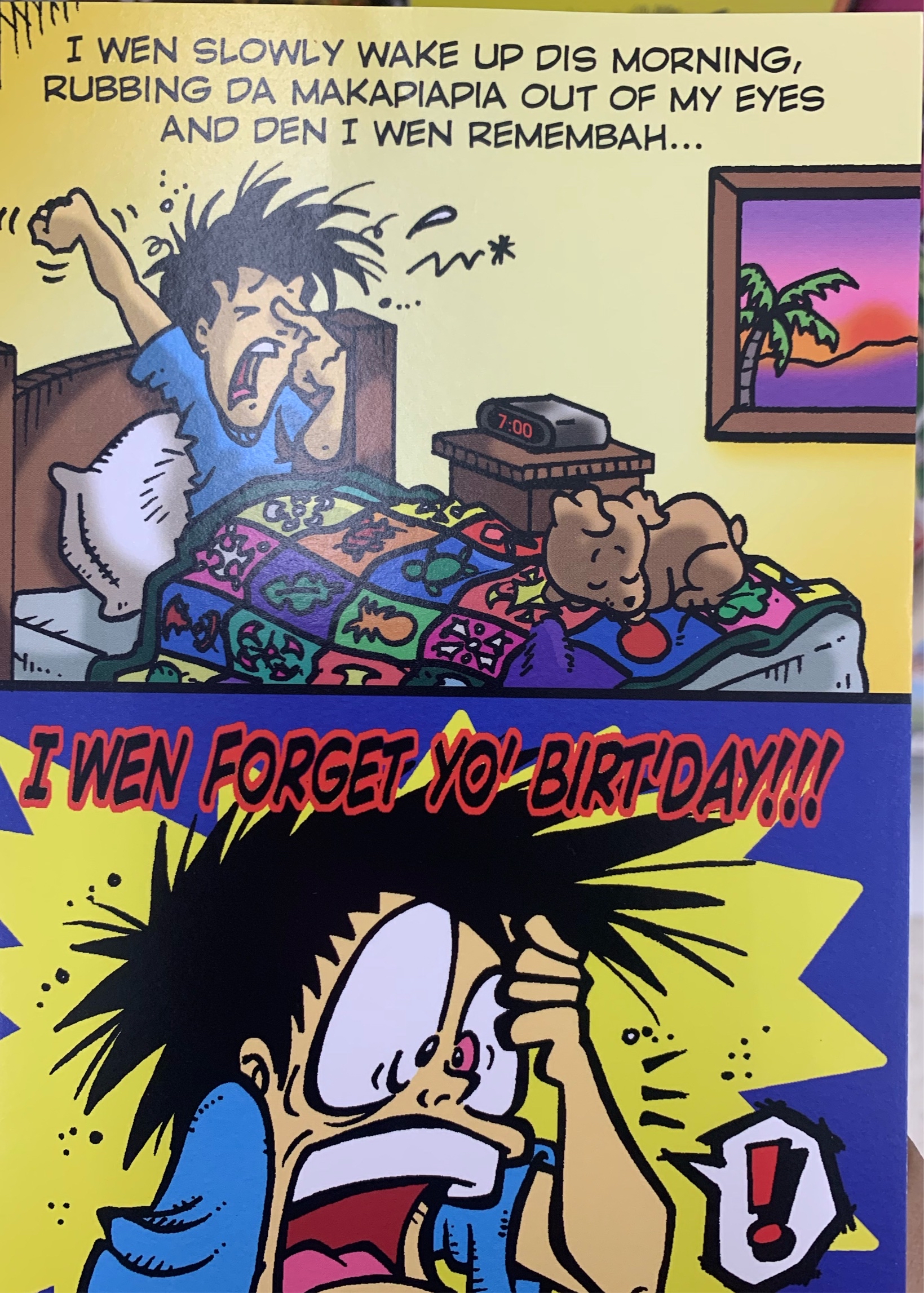
|
46053
|
|
United States
Kaneohe
|
|
|
SU: Check Up #2
- What languages are used on the sign?:
The languages that are used on the sign is Hawai’i Creole or Pidgin, Hawaiian and English.
- How is the language presented?:
The languages are presented in small, skinny, black letters but also in big, bold, black and red letters.
- Who is the audience?:
The audience is the general public, but would probably be more directed towards locals.
- What is the domain?:
The domain is on a birthday card in a public store.
- What is the sign telling people?:
It is telling people that this boy was slowly waking up this morning, rubbing the makapiapia (mucous of the eye) out of his eyes and then he remembered that he forgot this person’s birthday.
- Why is Pidgin and Hawaiian being used here?:
Pidgin and Hawaiian are being used here because it is an entertaining way to write a birthday card. It is appropriate to give someone who knows and is exposed to the language of Pidgin.
|
Multilingual Hawaiʻi
|
|
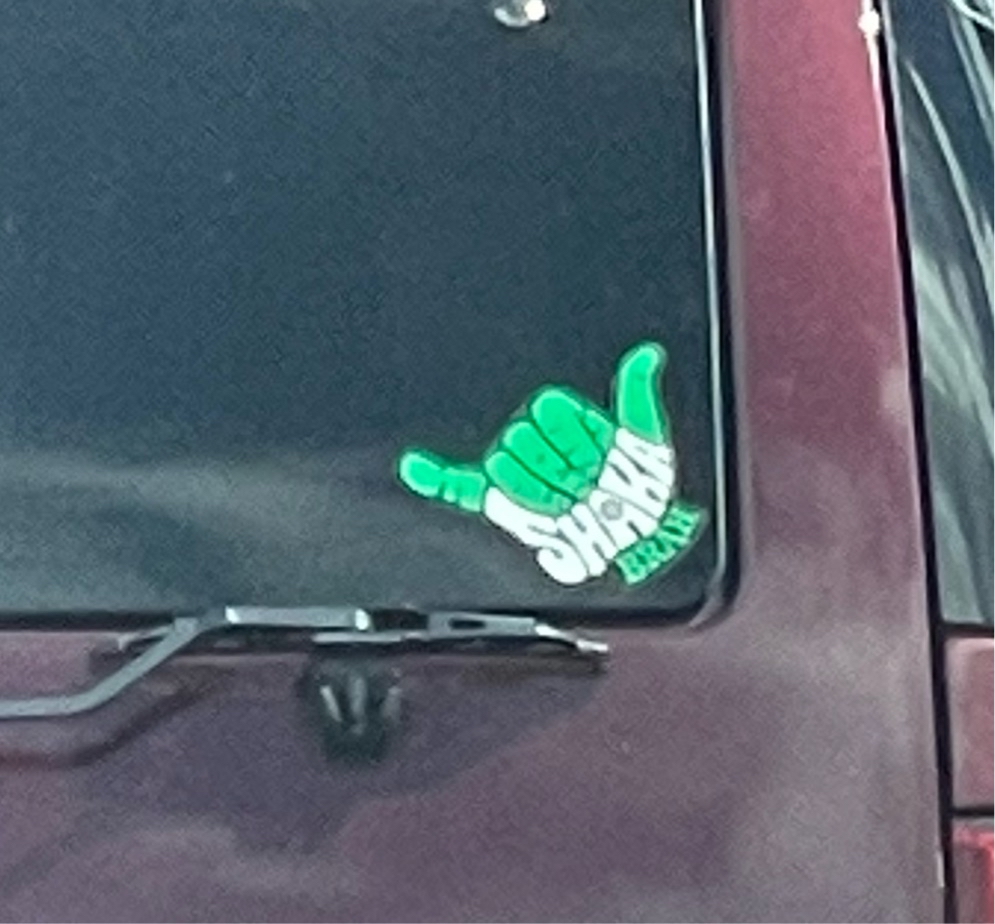
|
46054
|
|
United States
Kaneohe
|
|
|
SU: Check Up #2
- What language is used on the sign?:
The language that is used on the sign is Hawai’i Creole or Pidgin.
- How is the language presented?:
The language is presented in big and small font in the colors green and white.
- Who is the audience?:
The audience is the general public as it could be directed towards the locals and non-locals.
- What is the domain?:
The domain is on the back of a car used as a bumper sticker.
- What is the sign telling people?:
The sign is telling people hello and see you later as the shaka is a greeting. This is kind of the equivalent of “Shoots, brah”.
- Why is Pidgin being used here?:
Pidgin is being used here because it is appropriate in the island of Hawai’i and all of the locals know what this means so a lot of people can relate to it.
|
Multilingual Hawaiʻi
|
|
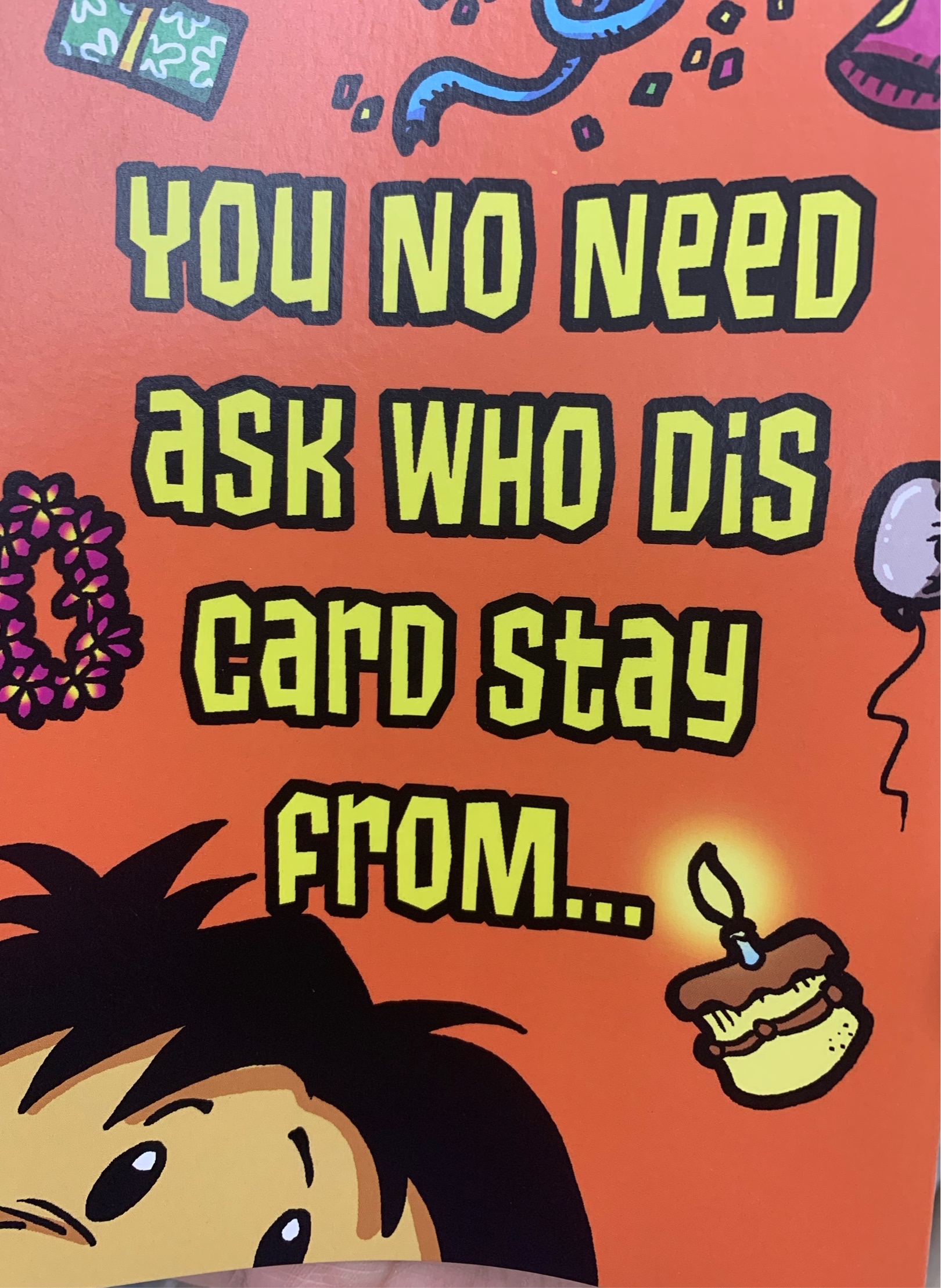
|
46055
|
|
United States
Kaneohe
|
|
|
SU: Check Up #2
- What languages are used on the sign?:
The languages that are used on the sign is Hawai’i Creole or Pidgin and English.
- How are the languages presented?:
The languages are presented in big, bolded, yellow and black letters.
- Who is the audience?:
The audience is the general public, but would probably be more directed to the locals.
- What is the domain?:
The domain is on a birthday card in a public store.
- What is the sign telling people?:
The sign is telling people that whoever is receiving this card should already know who is giving it to them.
- Why is Pidgin being used here?:
Posing is being used here because it is a unique way to write a birthday card and it is something especially unique to the people of Hawai’i. It is appropriate to give someone who knows and is exposed to the language of Pidgin.
|
Multilingual Hawaiʻi
|
|
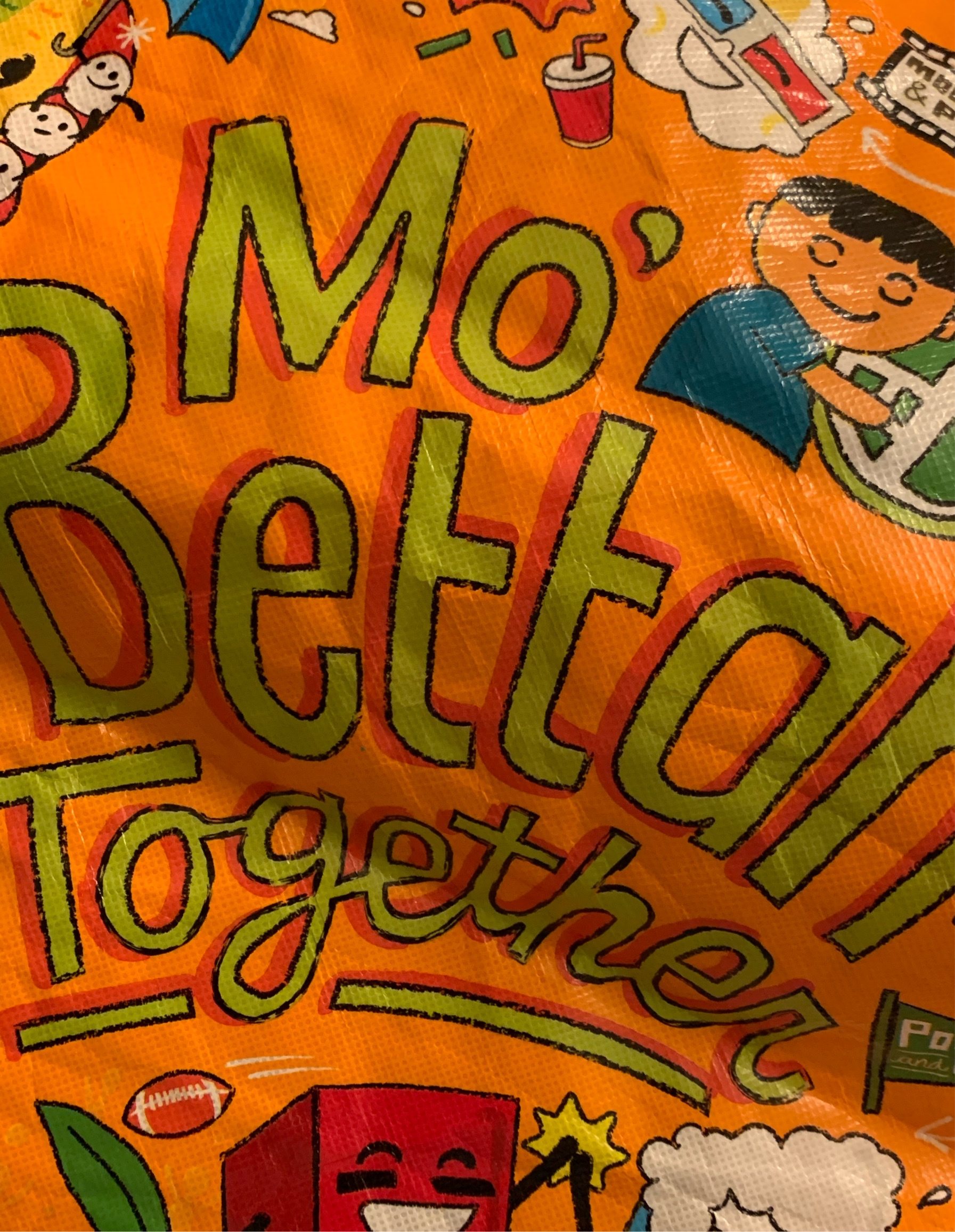
|
46056
|
|
United States
Kaneohe
|
|
|
HC
Domain: Plastic Reusable Bag Design
Purpose: Design choice of the bag
Audience: Store patrons who may purchase the bag
Print: Planet Earth Bag (tm)
Message: "Mo' Bettah" is a pidgin term to describe a noun placeholder as superior
|
Multilingual Hawaiʻi
|
|
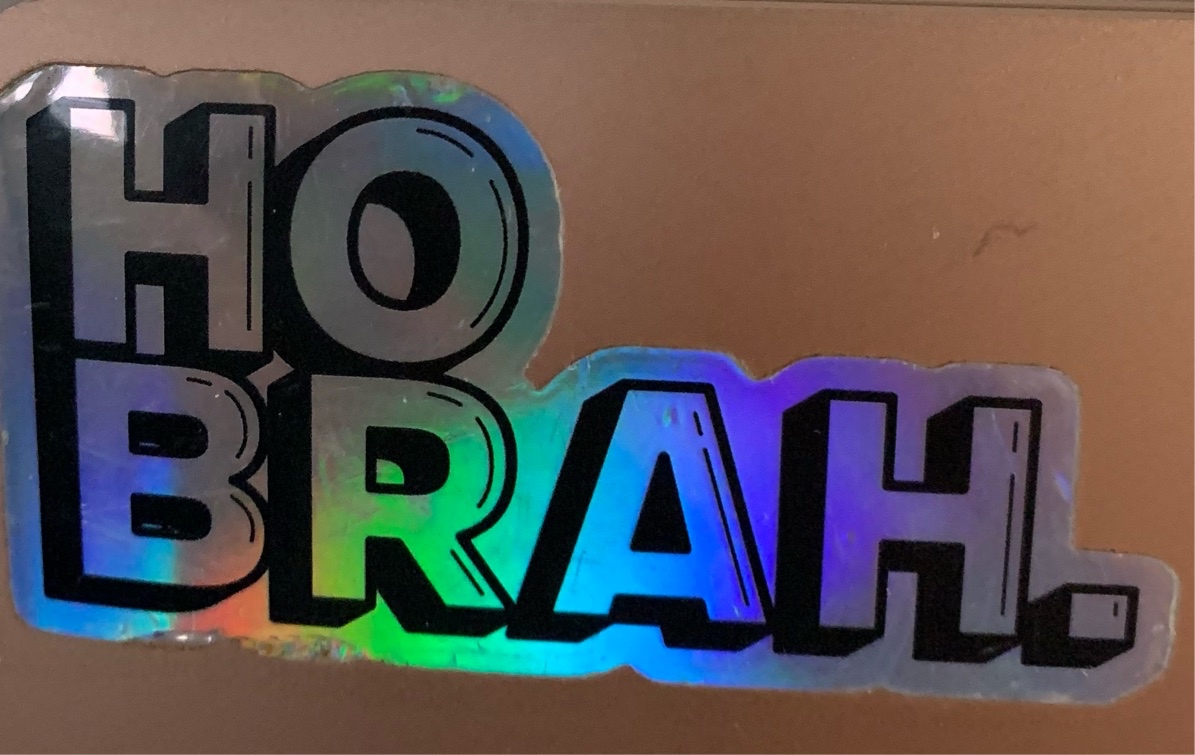
|
46057
|
|
United States
Honolulu
|
|
|
HC
Domain: Vinyl sticker
Purpose: gag/joke sticker
Intended audience: Individuals who enjoy saying "Ho Brah"
Print: 2x3" holographic sticker
Message: "Ho Brah" is to describe a feeling of intense excitement or disbelief
|
Multilingual Hawaiʻi
|
|
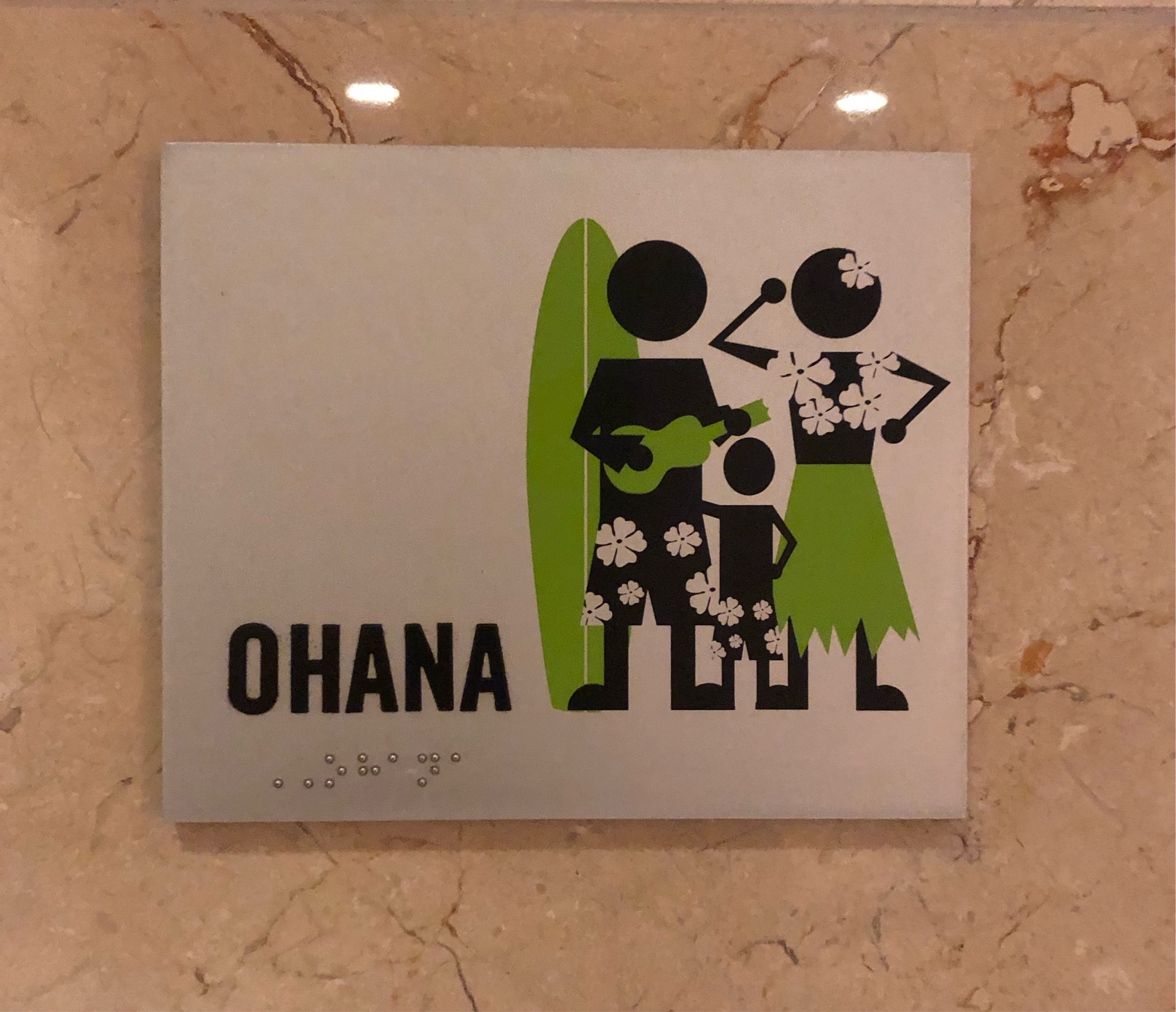
|
46058
|
|
United States
Honolulu
|
|
|
This was a sign for the bathroom for a family stall. I was at the movie theater and they had different bathroom options. It’s nice when they have the photo comic picture and the word to know exactly what it’s indicating. GM
|
Multilingual Hawaiʻi
|
|
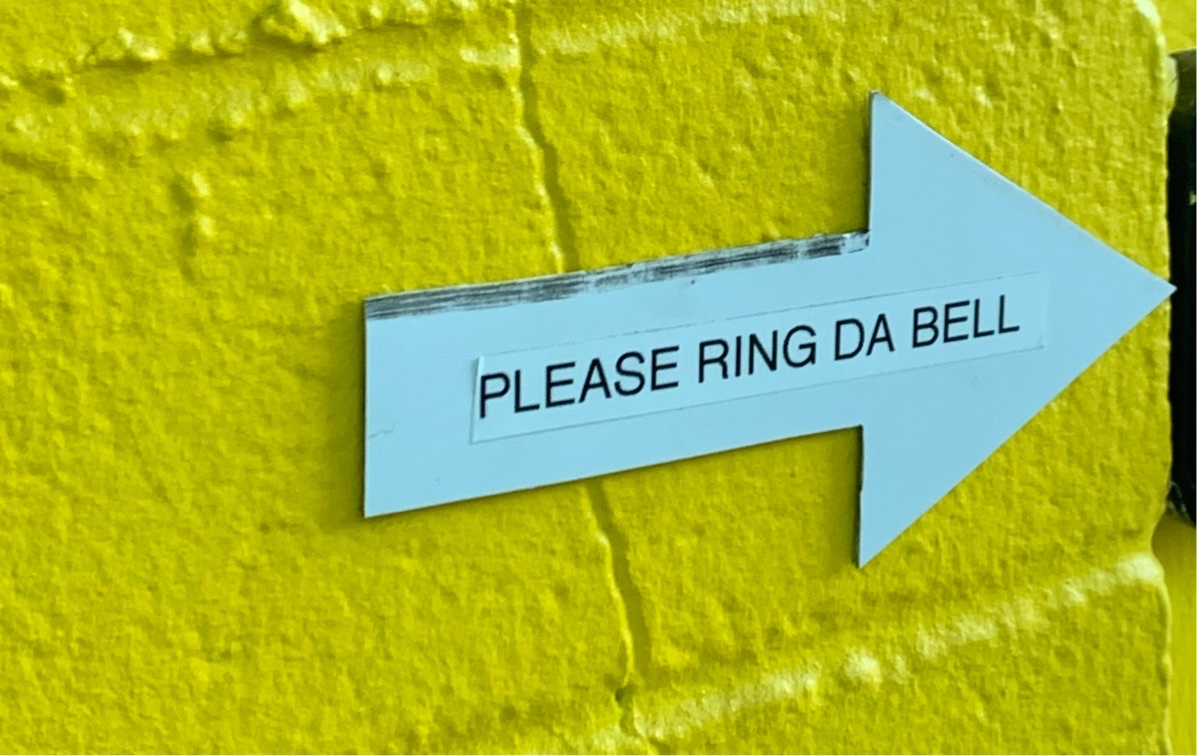
|
46059
|
|
United States
Honolulu
|
|
|
HC
Domain: sign outside a retail record store
Purpose: To ask the customer to ring the bell
Print: vinyl label
Implied message: "Da" is the pidgin equivalent to the english word "the". "Please ring da bell", is a local way to ask to "Please ring the bell."
|
Multilingual Hawaiʻi
|
|
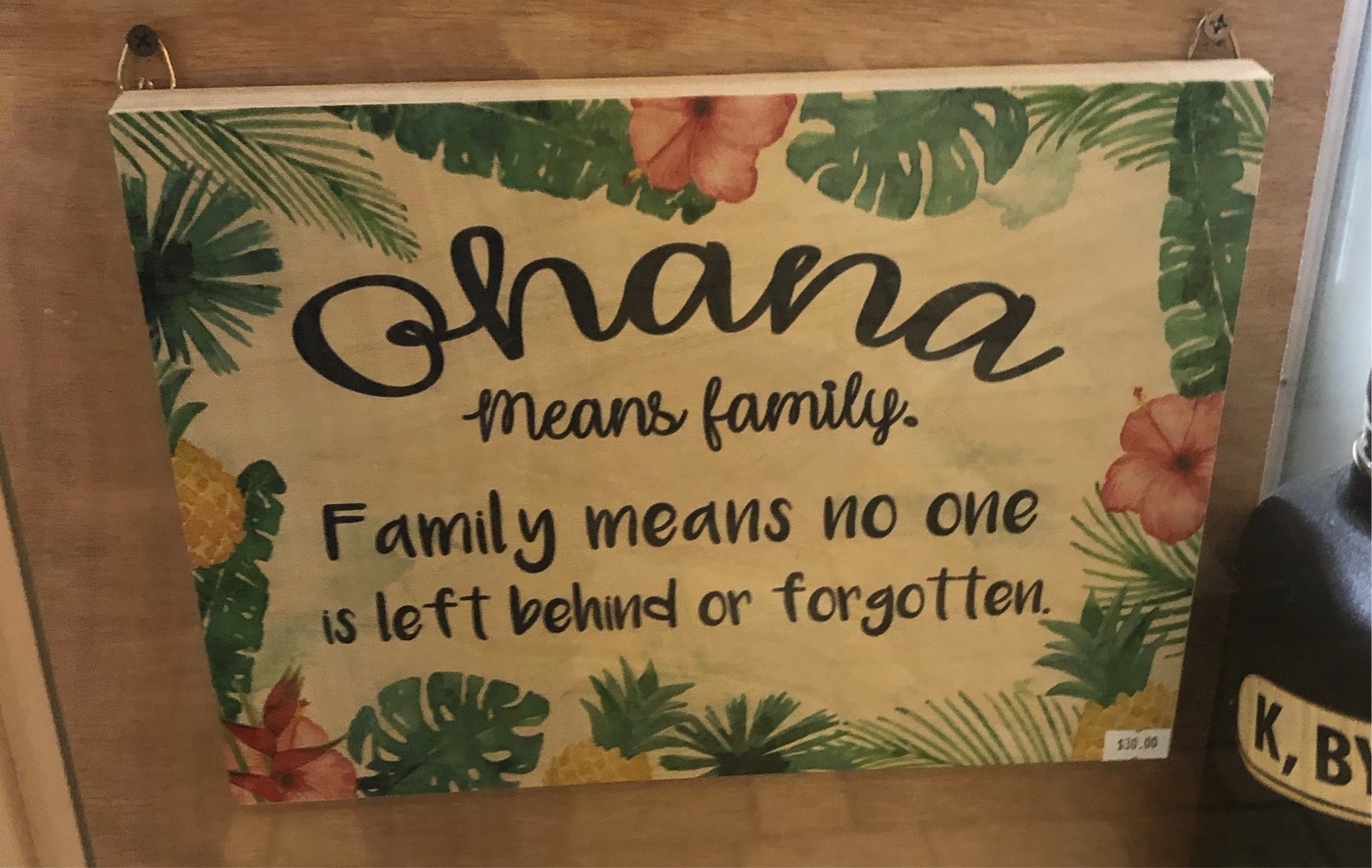
|
46060
|
|
United States
Honolulu
|
|
|
Ohana! I saw this sign at the mall and thought it was very cute! This is a nice sign to put up in a family home for decorations. It was being displayed on when of the stands at the mall. GM
|
Multilingual Hawaiʻi
|
|
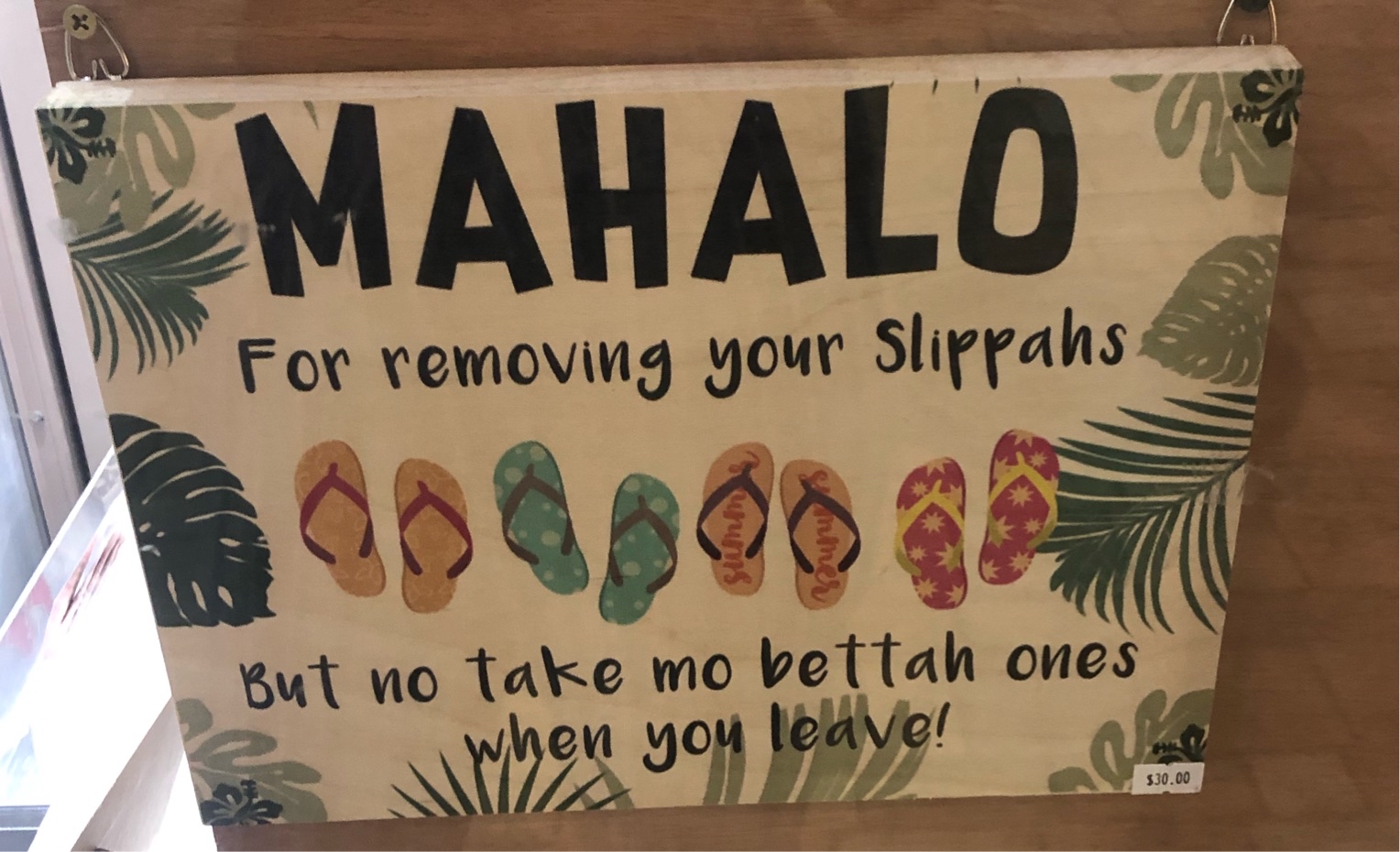
|
46061
|
|
United States
Honolulu
|
|
|
Mahalo! I saw this sign at the mall at one of the stands by the food court. This is a great sign to decorate a house with, especially at the door to tell guests to take off shoes. GM
|
Multilingual Hawaiʻi
|
|